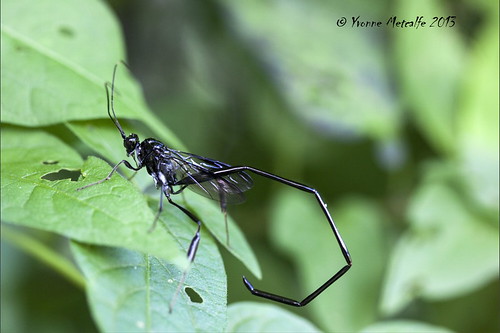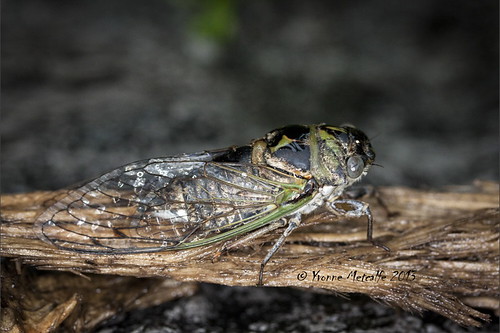Nature Nut Lady
I have combined my passion for photography with my passion for the great outdoors and all of its amazing creatures and creations.
Tuesday, July 29, 2014
Maple Callus Borer
Juicy Tidbits
Is a clearwing moth.
Has a notable red tuft at the tip of its abdomen.
Host for these moths are maple trees. Trees can be significantly damaged over time by the larvae. Silver, Red and Sugar Maples are favourite host trees.
Found throughout North America.
Moths fly from April to August.
Check out these sites for more information on the Maple Callus Borer:
Bugwood Wiki: http://wiki.bugwood.org/Archive:Borers/Synanthedon_acerni
Bug Guide: http://bugguide.net/node/view/10962
North American Moths blog: http://moths.wordpress.com/2010/04/01/maple-callus-borer/
Butterflies and Moths of North America: http://www.butterfliesandmoths.org/species/Synanthedon-acerni
Sunday, July 20, 2014
Fishfly
This fishfly I have determined to be a male, as it has very feathery antennae. Antennae of the females are more beadlike. Because of the feathery antennae, I also believe this fishfly to be in the genus Chauliodes. The larvae of this fishfly live in still waters, as opposed to the running waters of rivers and streams.
You can click on the photos for a closer look!
Lucky for me this fella was very brave and patient. I thought for sure he'd fly away when I put my finger in for a perspective shot, but he didn't. Thanks big guy! I'd put the size of this fishfly at a little over 2 inches from head to wingtip.
A fly popped in for a little visit to help show the large size of this fishfly.
You can see here that fishflies have not just two eyes, but five. Two are compound eyes (eyes with multiple lenses), but the other three that you see on the top of its head are simple eyes which only have one lens. The three simple eyes here all point in a different direction, which I suspect help aid the fishfly in avoiding hungry predators.
Take a closer look at the cool mandibles of this fishfly. Most of the reading I have done indicates that the adult fishfly doesn't feed or eats very little. The mandibles could be used for self-defense from predators as well as during the mating process. I have also been unable to determine if they bite. I have read that the larvae can bite, but have found no information on the "biting" status of adults.
Juicy Tidbits
Fishflies are part of the Megaloptera order, which also includes alderflies and dobsonflies. The order name means "ample wings".
Dobsonflies and fishflies are part of the family Corydalidae.
When in the aquatic larval stage, the larvae feed on other insects like black fly larvae.
Adults eat little or nothing at all.
I believe this specimen is Chauliodes pectinicornis, which is commonly known as the summer fishfly.
The aquatic larval stage of the fishfly can last up to 2 - 3 years.
Adults typically only live for a few days, just enough time to mate and lay eggs.
Male fishflies have feathery antennae, the female fishfly antennae are more beadlike.
Life cycle is that of complete metamorphosis: egg ~ larva ~ pupa ~ adult.
Body size 21 - 46 mm (0.8 inches to 1.8 inches) not including wingspan.
For more information on the fishfly, check out these amazing sites:
Insect Identification. org -- http://www.insectidentification.org/insect-description.asp?identification=Fishfly
Bioweb Home -- http://bioweb.uwlax.edu/bio210/s2012/bauer_jona/
Bug Guide. net -- http://bugguide.net/node/view/8568
Saturday, July 19, 2014
Painted Lichen Moth
Here are some of the photos I was able to capture before it flew away....
For more information on the Painted Lichen Moth, check out these great sites:
http://en.wikipedia.org/wiki/Hypoprepia_fucosa ~ Wikipedia
http://bugguide.net/node/view/16271 ~ Bug Guide
http://awaytogarden.com/lichen-moths/ ~ A Way to Garden
Sunday, June 1, 2014
Cicada Exuvia
Tuesday, October 8, 2013
Single Red Autumn Vine
The beauty of Autumn is upon us and can easily be found anywhere right now. You don't have to travel far to find the amazing colours that Fall brings. Head down to the lake, take a walk in the woods or simply look in your backyard. I'm sure you'll see some amazing colours that are sure to soothe your soul.
I've been admiring these vines that have crept over my fence from my neighbour's place. I hope you enjoy them as much as I do!
Now get oustide and enjoy some nature!
Friday, September 6, 2013
American Pelecinid Female
This beautiful stingless wasp was found at the Earl Rowe campground in Alliston, Ontario. It was at least 1 1/2 inches in length (that includes the tail) if not more. I have never encountered one of these before, so was quite thrilled to capture it!
The male pelecinid wasp is quite rare. What's interesting about this wasp is that the females are able to reproduce without the help of the male. This type of reproduction is called parthenogenisis, which means "virgin birth" . This simply means that the female can lay eggs that don't require fertilization. These unfertilized eggs hatch more females, which explains why this species is predominantly female. For more info on this process, check out this site: http://bioweb.uwlax.edu/bio210/s2012/brummond_jord/reproduction.htm
Monday, September 2, 2013
Dogday Harvestfly on Wood
The Dogday Harvestfly (Tibicen canicularis) is a type of cicada. This one was found in my friend's backyard here in Barrie. Including its wings, it was about 1 1/2 inches in length (about 40 mm).
These creatures cannot sting or bite. It is believed that the dogday harvestfly doesn't even eat. They live underground as wingless nymphs for two to five years.There, they feed on root juices until they are ready to become adults. When ready, they emerge from the dark underground, climb the nearest plant and molt their skin. Once they have climbed out of their skin and their wings have dried, they make their way to the treetops to look for a mate.
You can hear the male cicadas singing in the summer ~ this is how they find their mates!Their call sounds like a circular saw cutting through wood.
I love it when I'm able to photograph these amazing creatures.... they are hard to find (eventhough I hear them all the time).
If you would ever like to find a cicada, the best way to do so is to look on the trunks of trees during the summer. If you are lucky, you might be able to find their empty skin shells (called exuvia). If you this, just look up the tree and see if the freshly emerged cicada is still there. I was lucky enough last year to find four emerging cicadas on a tree as Bass Lake, Ontario. What a thrill that was to watch and photograph!
You can check out my Emerging Cicada post from July 22, 2012 to see pictures of cicada nymphs transforming into adults. Very cool!













